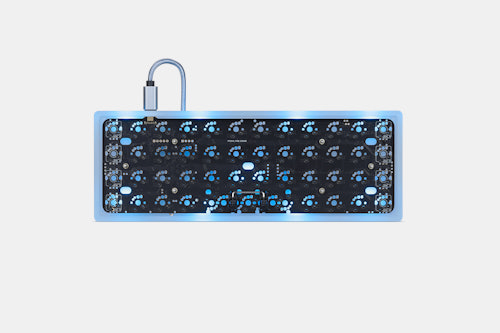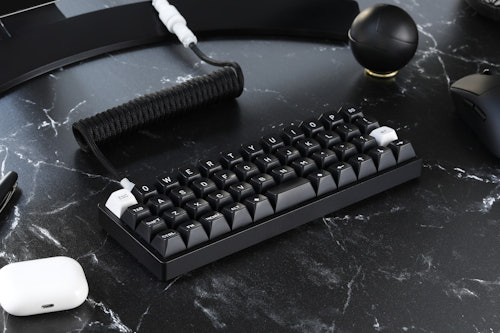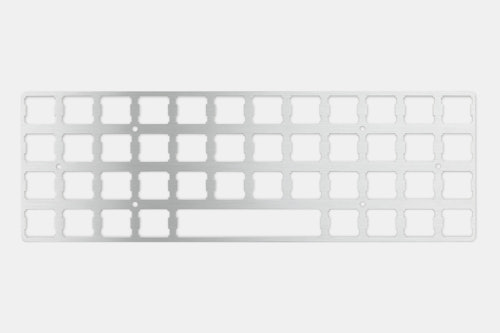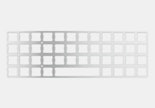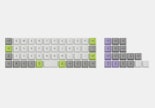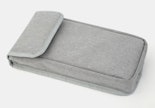Click to view our Accessibility Statement or contact us with accessibility-related questions90% would recommend to a friend 









Drop + OLKB Planck Mechanical Keyboard Kit V7
$129
Drop + OLKB Planck Mechanical Keyboard Kit V7
bookmark_border
$129
Ready to Ship
·
Free Returns in USA
●
Members who purchase earn
387
Drop Rewards
Frequently bought together:
Review Highlights:
expand_less
Q&A Highlights:
expand_less
Customer Reviews
4.4
(782 reviews)
5star(508)
4star(167)
3star(35)
2star(28)
1star(44)
By Feature
Sound
SilentLoud
Feel
StiffFlexible
Build Quality
4.7
(41)
ActivitiesPopular among reviewers
Paired SwitchPopular among reviewers
search
close
Images
keyboard_arrow_downSort by: Newest
keyboard_arrow_down
crypticclack
0
May 2, 2024
Activities:Work & Gaming
Paired Switch:Linear
Keyboards Owned:11
checkVerified Buyer
Solid board. excellent build qiuality! Planck V7
Running it with steel POM plate and all the included fixtures for the most solid build. Aluminum case is super solid, it definitely will never break unless you try blocking bullets maybe! Weighty though! I installed Akko Fairy Silent switches because I was being cheap but am not disappointed. Whisper quiet in the Planck if a tiny bit spongier than other non silent linears I have tried. Using the recommended keycaps (white/grey/green/purple ortho set). They are nice caps. It will definitely take a couple of weeks to adjust to the ortho layout but i can tell i am going to like it already. The built in under board LEDs are a nice touch as are the sounds the board makes (mutable); very retro cool. I would say to make the most out of the built in LEDs you need the acrylic case or a custom case.
Sound - slight ping audible from the solid aluminium (I'm British!) case but I didn't buy any foam/poron inserts. However the silent Akko switches make it practically unnoticeable. i tried it with MX Browns too and wow! That was noisy. The construction of the case definitely amplifies any keystroke. If sound is an issue for you, I would go for the ready made inserts available for this board. You could probably make this board sound creamy or thoccy with the right switches/caps/inserts. Or just use silent switches like me! I wonder if the sound profile is different with the acrylic case?
Build - seems solid. Overbuilt case that could stop bullets (please don't try). I'm wondering if the acrylic case is lighter? Can't fault the PCB - looks clean. I think this is built to last but time will tell. Ten out of ten so far.
Dimensions - This thing is tiny! Roughly 24cm by 9cm. It lies totally flat on a desktop so is not angled like many modern mechanical boards. I am thinking of making a custom stand for it so that there is a little slant on it. Might make writing with it a little more familiar. With everything installed, my Planck now weighs 548 (about 1.2lb) grams so definitely not lightweight for its size but it is super portable! The vast majority of the weight is the case.
Use case - I will be using it as a daily driver for work. I think I will be typing about 20-30% more slowly until I get used to the layout. The layout - it's weird - it's like typing with a 25ms delay! ;-) But in typing there is definitely no delay!!! I reckon this would also be a good board for gaming due to the size, solid build and available key binding customisation.
Looks - One of the first things that attracted me to buying this board. I love the way it looks. Very minimal. Obviously, finding alternative caps for this board is a little tricky which is why I went with the ones available with the board. However, they are nice caps, nothing to be disappointed with there.
Cons - Probably not great sounding without some modifications but I'm guessing most people buying this board are getting it for function not sound. I would definitely prefer to see a fully enclosed usb c port as I have concerns about long term durability in its current configuration however, saying that, it seems well attached to the board. I would also like to see some kind of built in feet to create an angle but to keep things minimal, I can see why that feature wasn't incorporated. The spacebar seems to rattle a little on the stabiliser so probably needs tweaking.
Overall impression - Good quality board. Quite specialised due to layout, probably will take some getting used to. I like it and think it offers pretty good value for the board you are getting. Nice braided USB cable included ;-)
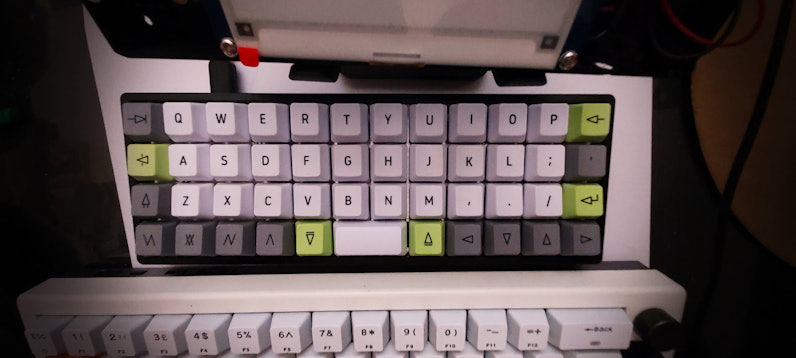

Recommends this product? Yes
Dirmip
4
Apr 30, 2024
checkVerified Buyer
Solid keyboard, poor screws
Very solid build, could be used as hammer. Nice and compact!
Screws break easily so be careful and don't tighten them too much
(Edited)
Recommends this product? Yes
llPhex
9
Keyboard Club Member
Apr 26, 2024
Activities:Work
Paired Switch:Linear
Keyboards Owned:5
checkVerified Buyer
Smol & Mighty
I personally love this little dude, great 40% ortholinear option
Recommends this product? Yes
tball_22
0
Keyboard Club Member
Mar 12, 2024
Activities:Work & Gaming
Paired Switch:Tactile
Keyboards Owned:1
checkVerified Buyer
Amazing, would recommend to anyone looking for a 40%
Super awesome, only thing I'd say is the flexibility of the POM plate made it extremely difficult to pop in the switches (Gateron browns) They would just push the plate down and bend it and not lock into place, required a lot of trial and error to get them in. Once they were in though everything was amazing. Will likely purchase another one soon though I'll likely try the steel plate next time.
Recommends this product? Yes

viperr
3
Mar 9, 2024
Activities:Work & Gaming
Paired Switch:Linear
Keyboards Owned:1
checkVerified Buyer
Everybody should try a 40% ortho
This was my first ortho and a 40% keyboard and while I was not sure whether I'd like the layout at first, after trying it out, I absolutely fell in love with it. It's so portable, all the functions I need are just a few key combinations away and right at my fingertips, I barely even have to move my hands. I'd go as far as to say that this keyboard has made me so much more efficient at typing, it's great!
Recommends this product? Yes

katano66
6
Feb 16, 2024
Activities:Work
Paired Switch:Clicky
Keyboards Owned:7
checkVerified Buyer
third planck
very good as expected, one negative thing is that the new revision does not have a switch plate
Recommends this product? Yes
deimos169
2
Feb 12, 2024
Activities:Gaming
Paired Switch:Linear
Keyboards Owned:3
checkVerified Buyer
Drop OLKB!
A very fun tiny keeb. I have a POM switch plate, Boba LT switches and Oblivion SA keycaps. I recommend!

Recommends this product? Yes

swoldier
9
Keyboard Club Member
Jan 26, 2024
Activities:Gaming
Paired Switch:Tactile
Keyboards Owned:5
checkVerified Buyer
Such a Cute little board!
Recently got into Keyboards and thought this was such a cool buy. This thing is super tiny and really cute. Conversation starter for sure
Recommends this product? Yes
Francosky
4
Jan 19, 2024
checkVerified Buyer
Muy portatil y super customizable
La experiencia es buena, full programable y es una belleza.
Pero al haberme acostumbrado al Preonic (es el que uso siempre), me queda en falta la línea de números. Pero si lo que necesitas es que sea transportable, esta es una buena opción.
(Edited)
Recommends this product? Yes
stef011
1
Jan 17, 2024
Activities:Work & Gaming
Paired Switch:Linear
Keyboards Owned:1
checkVerified Buyer
Cool light and thockky
I use it every day at work, and I love it !
After you get used to the 40% layout, you won't ever come back to a full size keyboard, if you are a good programmer you can totally use it for gaming !
Recommends this product? Yes
Showing 10 of 961
Recent Activity
